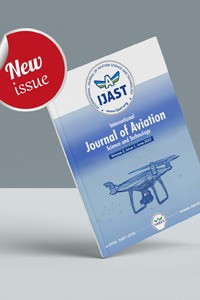Research Article
Issue Editorial Board

Dr. Patti Clark is an Adjunct Faculty member and former Associate Professor with the College of Aviation, Department of Graduate Studies at Embry-Riddle Aeronautical University – Worldwide. To date, Dr. Clark has published numerous articles related to aviation sustainability, aircraft maintenance workforce and safety management issues. She also served on several national level aviation-related committees and panels. Airport management, sustainability and metrics in the aviation industry are her primary research interests.
Dr. Clark is a certified Project Management Professional (PMP), a Certified Member (CM) of the AAAE organization and an FAA licensed Airframe and Powerplant (A&P) Technician.
Aim & Scope
The International Journal of Aviation Science and Technology is an interdisciplinary journal that focuses mainly on the theme of aviation and sustainability, addressing a broad audience. The aim of this journal is to bring together compilation, research, discussion and criticism studies that link sustainability and aviation issues and to create national knowledge.
This journal accepts publications in aviation science, aircraft engineering, mechanical engineering, energy engineering, electrical-electronic engineering, material engineering, environmental engineering, industrial engineering, architecture, and many other applied sciences. In addition, other studies addressing issues related to aviation will be welcomed.
Author Guidelines
ARTICLE PREPARATION
Please follow the instruction for authors' page and use this Journal template:
Instruction for authors in journal web page
https://ijast.org/instructions-to-authors/
Article template
https://ijast.org/wp-content/uploads/2022/03/IJAST-Article-Template-for-Authors.zip
Please use Copyright agreement: (Download and then upload this file)
https://ijast.org/wp-content/uploads/2023/03/IJAST-Copyright-Agreement-23.docx
Article Types
• Research articles
• Review articles.
This article type should be selected when uploading. Research articles expected not to exceed 5000 to 7000 words limits. Full paper articles are original, high quality, scientific findings that reveal a unstudied and unpublished studies.
For review articles, not to exceed 7000 to 9000 words limit at most. The review article should reveal the point reached on the subject or bring together the studies done so far around the relevant subject to provide clarity. There is a strict policy to evaluate the review articles.
Article Structure
Full paper articles should include below sections.
• Title
• Authors
• Abstract
• Keywords
• Introduction
• Method
• Results and Discussion
• Conclusion
• Abbreviations
• Credit author statement
• References.
Styles are used effectively in article writing and use the styles transferred with the copies you will download from the journal pages. You can look the styles section at the end of the document for how to use styles.
Title
Article title should be determined in a way to express the subject and not exceed 10 words. Book Title style is used for the title.
Titles should be simple and concise. The first word should be capitalized; then only special, trade names and chemical symbols should be capitalized. Non-standard abbreviations should not be used. Please see the “Physical Review Style and Notation Guide” section how to use the styles in MS Word template.
Authors
Authors section should be placed under the title. The style of the authors section should be Authors. The first author should be written first, followed by the second author and other authors. Author information ijast.aviation@gmail.com dergipark.org.tr/en/pub/ijast International Journal of Aviation Science and Technology – IJAST 5 should follow; In the first place, the institution of the author, the e-mail address and the ORCID ID information should be placed. It should be written in Affiliations style. Please see the “Physical Review Style and Notation Guide” section how to use the styles in MS Word template. However, we’re expecting to be provided this information after the double-peer review process.Abstract
Abstract cannot exceed 250 words. Abstract style is used for the abstract section. Abstract must reflect all the important aspects of the manuscript. We are accepting only one paragraph of manuscript. But we may advise you to prepare the manuscript abstract by answering the following questions. What is my purpose in this article? Which method, or approach or design did I used? Which findings have I revealed? What is this article’s originality? Please use Abstract Style in style gallery. Please see the “Physical Review Style and Notation Guide” section how to use the styles in MS Word template..
Keywords
Keywords should be given as words derived from the content of the article and the content of the abstract. Keywords should be written in Keywords style. Please see the “Physical Review Style and Notation Guide” section how to use the styles in MS Word template.References
IJAST has recently change its citation system to the Harvard Cite Them Right. Please use this citation and referencing system to prepare your references section. Please follow below link to see the examples how to use referencing while building your manuscript.
https://ijast.org/wp-content/uploads/templates/ReferencingGuideline.pdf
-----IMRAD Approach----
In order to build a scientific article to achieve its purpose, the author should express the problem, approach to the problem and solutions in a clear and understandable language. If the article is not expressed clearly, readers will not be able to draw sufficient conclusions from the article and scientific writing will not reach its purpose. The open problem mentioned should make a new contribution to the literature. However, he should have conveyed the words that would explain his command of the literature in a way to convey his domination of similar articles and problems previously published on the subject.
Scientific writing; should be expressed in effective, clear and meaningful words. Therefore, the scientist must be cultured to be successful in this endeavor. We must all admit that “English has almost become the universal language of science” (E. Garfield, The Scientist, 7 September 1987, p.9). All scientists should learn to use English with precision. English does not need to be written in a complex and requiring native-level knowledge to be understood. In a scientific article it is said: “The best English is English that gives meaning with the least number of short words” (an authoritative expression printed in the Directives for Authors section of the Journal of Bacteriology).
We strongly advise to follow IMRaD approach to the authors as seen in Fig. 1.The IMRaD logic can be defined in the questionnaire: Which problem has been studied? Answer: Introduction. How was the problem studied? Answer: Methods. What was found? Answer: Results. What does these mean? Answer: Discussion. The IMRaD format, which has been advancing slowly since the late 19th century, found an almost universal use in research journals. Today, this area of usage helps the author in editing and writing the text; It seems that it provides an easy roadmap for editors, reviewers and ultimately readers who read and watch the article.
Credit Author statement
Author information should not be included in the first page.
Ethical Principles and Publication Policy
https://ijast.org/ethics-policy/
Please follow the above link for updated information from the site
Price Policy
All articles published in IJAST Journal are open access and freely available online, immediately upon publication. Authors may read about publication charges policies by the following link.
https://ijast.org/publication-charge-policy/
Indexes
Citation Indexes
Journal Boards
Editor-in-Chief

Co-Editors

Section Editors


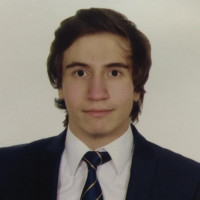



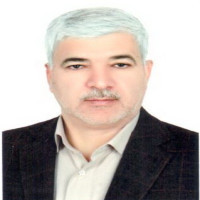
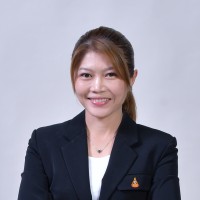
Editorial Board
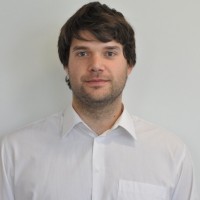

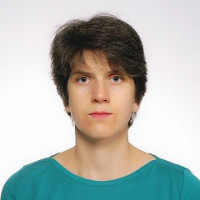


Language Editor
Editorial Office

Please find the article preperation and structure guides in author guidelines section.
Please do not hasitate to contact with us in here.





